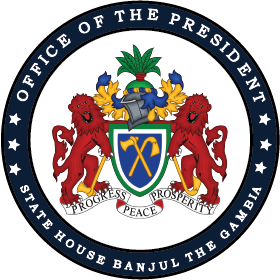SECTOR
Ministry of Basic and Secondary Education
OBJECTIVE
While taking cognizance of the functions of these two distinct but inseparable institutions, the policy document is aimed at addressing the continuum that characterizes education service delivery between the two Ministries in a coherent, integrated and sustainable manner with the ultimate goal of improving the human capital in the country. of The Republic of The Gambia.
CONTENT
The Education Sector Policy 2016 – 2030 is the first sector-wide policy after the separation of the portfolio of Higher Education from Basic and Secondary which saw the creation of a Ministry responsible for Higher Education, Research, Science and Technology and the repositioning of the
former Ministry of Education to focus on Basic and Secondary Education matters. The policy priorities and objectives are set against the background of the high population growth rate, the cost of education in relation to the poor and the current education share of the government budget. Taking into account these considerations, the policy prioritizes access to education, quality education, vocational and technical education, tertiary and higher education.
With these priority areas and key strategies in mind, the policy seeks to attain the following objectives:
- Increase the basic education gross enrolment rate to 118% by 2030 including enrolment in Madrassas;
- Increase the completion rates in basic education to 100% by 2030;
- Increase the supply of trained teachers and make more efficient use of the teaching force by maintaining the pupil/teacher ratio at 45:1 at the basic level;
- Maintain double-shift of classrooms at 36% by 2030 across all levels;
- Phase-out double-shift teachers by 2030;
- Maintain multi-grade teaching in a combined class size not exceeding 40;
- Maintain the share of enrolment of girls to 50% of total enrolment at the levels of basic and secondary education;
- Improve the quality of teaching and learning at all levels;
- Improve learning outcomes at all levels - at least 80% of students will attain minimum grade competencies by 2030;
- Increase the gross enrolment ratio of Early Childhood to 75% especially in the rural areas by 2030;
- Increase access, for adults and out-of-school youth, to functional literacy and numeracy programmes in order to half the illiterate population by 2030;
- Provide marketable and social skills to enable individuals to deal effectively with the demands and challenges of everyday life;
- Strengthen the teaching of the five most commonly used languages – Wollof, Pulaar, Mandinka, Jola and Sarahule to be taught at the basic, senior secondary, tertiary and higher education levels as subjects. Explore the possibility of including Serere and Manjago;
- Increase the transition rate from grade 9 to 10 to a minimum of 70%;
- Increase the quota of graduate teachers of Gambian nationality at the level of senior secondary from 66% to 95% by 2030;
- Strengthen the institutional and management capacity of the TVET system;
- Establish a sound financial basis for the long-term development and sustainability of TVET;
- Increase cost sharing and cost recovery at post-secondary training institutions;
- Develop and strengthen public-private partnership in the financing of higher education; and
- Improve organizational structure of the sector for efficient and effective service delivery.
-
Ministry of Public Service
7 documents -
Office of The Vice President
3 documents -
Ministry of Agriculture, Livestock and Food Security
8 documents -
Ministry of Basic and Secondary Education
2 documents -
Ministry of Defence
3 documents -
Ministry of Environment, Climate Change and Natural Resources
9 documents -
Ministry of Finance and Economic Affairs
11 documents -
Ministry of Foreign Affairs and International Cooperation
2 documents -
Ministry of Health
30 documents -
Ministry of Higher Education, Research, Science and Technology
3 documents -
Ministry of Communications and Digital Economy
24 documents -
Ministry of Interior
3 documents -
Ministry of Justice
1 document -
Ministry of Petroleum and Energy
5 documents -
Ministry of Trade Industry and Employment
8 documents -
Ministry of Transport Works and Infrastructure
3 documents -
Ministry of Tourism and Culture
3 documents -
Ministry of Women, Children and Social Welfare
12 documents -
Ministry of Youths and Sports
2 documents -
Ministry of Land and Regional Government
2 documents -
Ministry of Fisheries and Water Resources
3 documents -
Office of The President
0 documents

